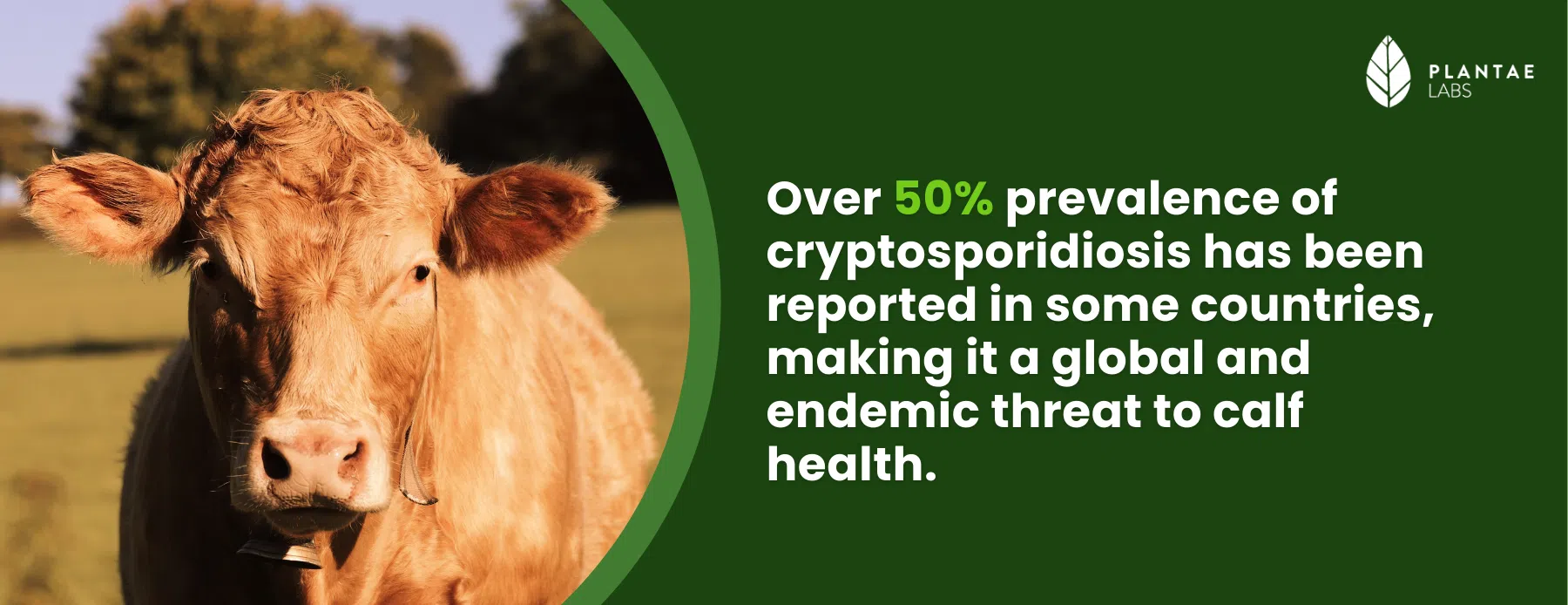Unveiling the hidden disease
Cryptosporidiosis (C. parvum) is one of the most common causes of diarrhea in neonatal calves around the world, resulting in significant costs, not only in treatment but also in productivity, which affects animal performance throughout their lives. This is mostly because of permanent damage to the gut in the early stages of development¹. However, this disease is highly underestimated and underdiagnosed because of its self-limiting and low-mortality nature.
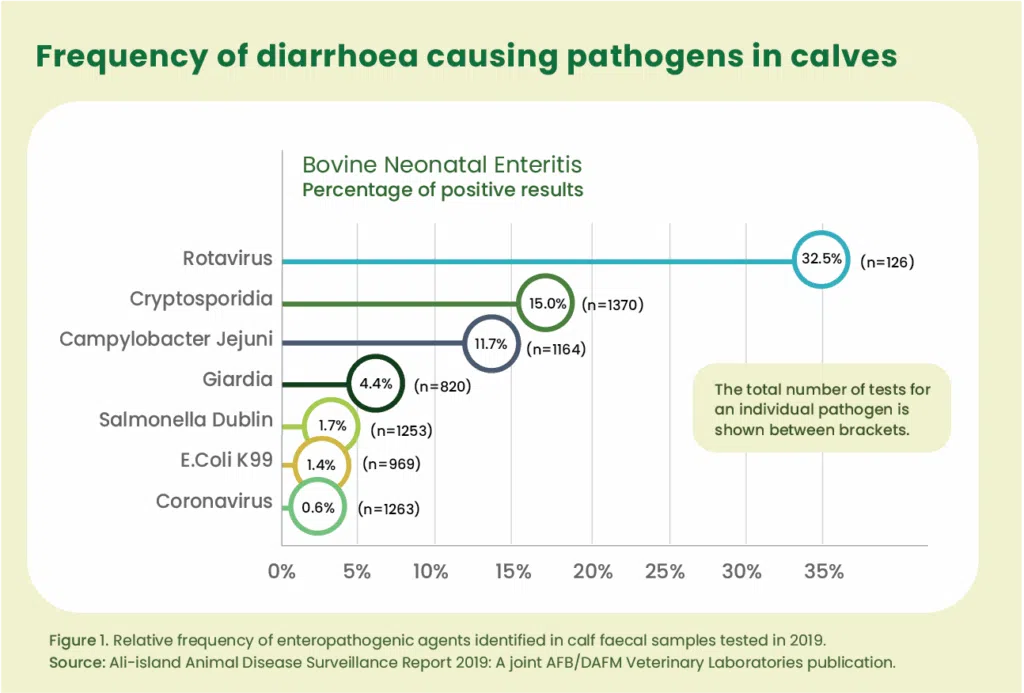
The prevalence of this parasitosis is highly variable, but it has been reported to range between 13% and 35%. However, it can also be observed in some countries at levels exceeding 50%. This shows the presence of this parasite to be global and endemic, being present in almost all dairy farms and highly frequent in beef production, with a high level of morbidity around the world. This creates a high risk of infection, and with it, a loss in the animal’s productive potential. This cost can range between 100 to 150 euros per calf, including direct expenses related to veterinary care and indirect costs associated with decreased feed efficiency, lower weight gain, and increased susceptibility to other diseases² ³.
The challenge to control Crypto
One of the most challenging factors of the disease is the difficulty in controlling it. This is mostly related to the multifactorial features of the parasite that prevent effective control measures and treatments⁴:
- Lack of effective vaccination
- High environmental stability of oocysts
- High resistance to common biosecurity measures and disinfectants
- Low infective dose of oocysts
- High levels of infective oocyst excretion by infected animals
This must also be summed up with the few therapeutic alternatives available in the market. It is also important to consider that Halofuginone, one of the most well-known therapeutic alternatives, even though it is effective to treat and prevent infection, can also show side effects in certain circumstances, generating problems in treated animals⁵.
For this reason, the focus on preventing the disease and on finding better and more natural treatments has been a priority. The focus has mostly been on increasing immunity and preventing environmental contamination⁴.
Quillaja saponaria in the prevention and treatment of Crypto
The Quillaja saponaria extracts have already been proven as potential and effective natural treatments and preventive methods for other parasitic diseases in species such as coccidiosis and necrotic enteritis in broiler production. This is due to the immune-modulating effects and antiparasitic properties they possess⁶.
Production improvement and reducing environmental contamination
In trials conducted with proprietary Quillaja saponaria extracts on mice models infected with Cryptosporidium parvum, positive results have been shown regarding significant effects in increasing the body weight gain of infected animals while showing fewer side effects.
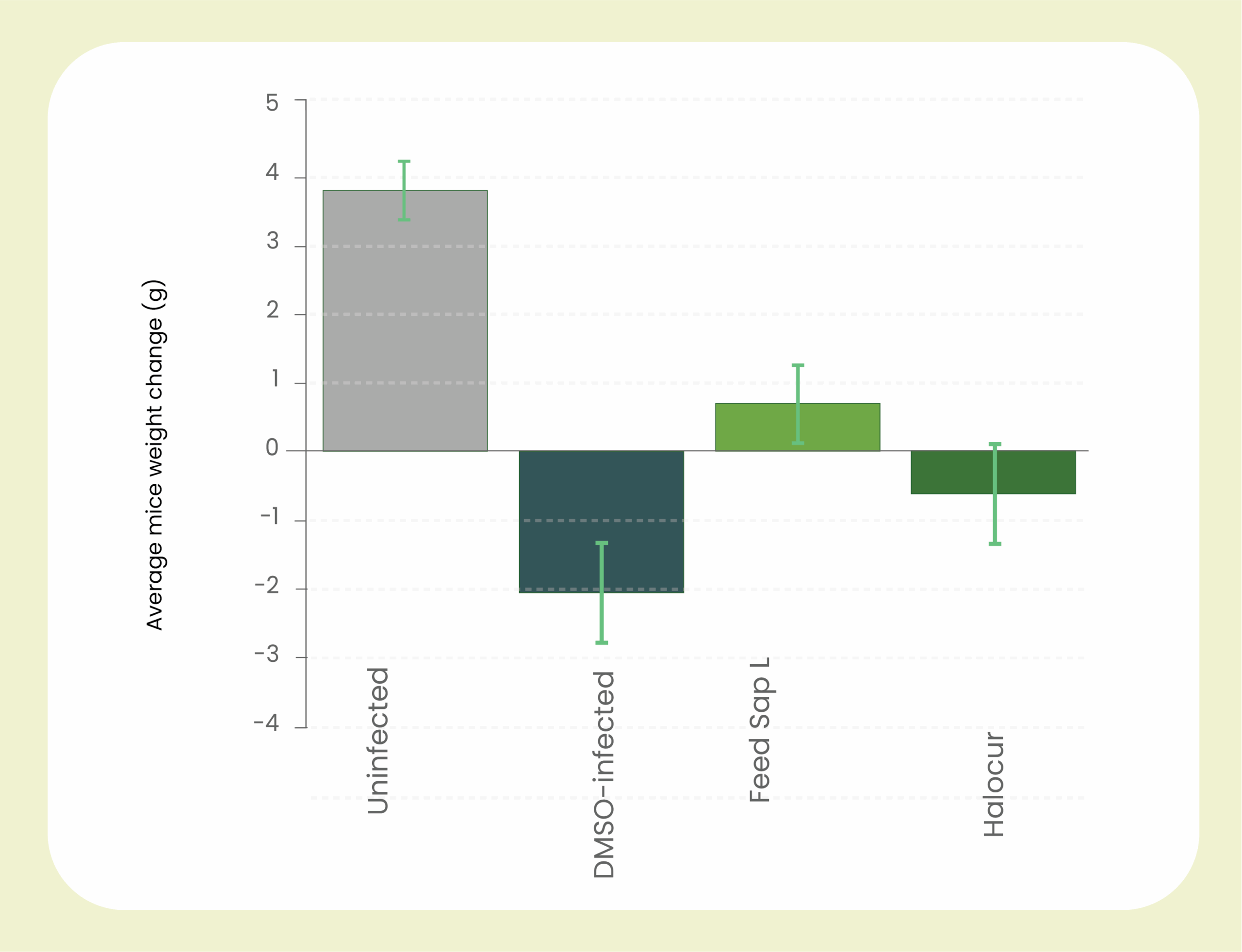
This can be related to the reduction of inflammation and the increase in the repair of the intestinal wall, maintaining its integrity.

Moreover, by breaking the life cycle of C. parvum, it diminished the production of oocysts in the infected calf, and with this reduced the infective load in the environment. This is related to the interference in the reproductive cycle, directly affecting the sporozoite.
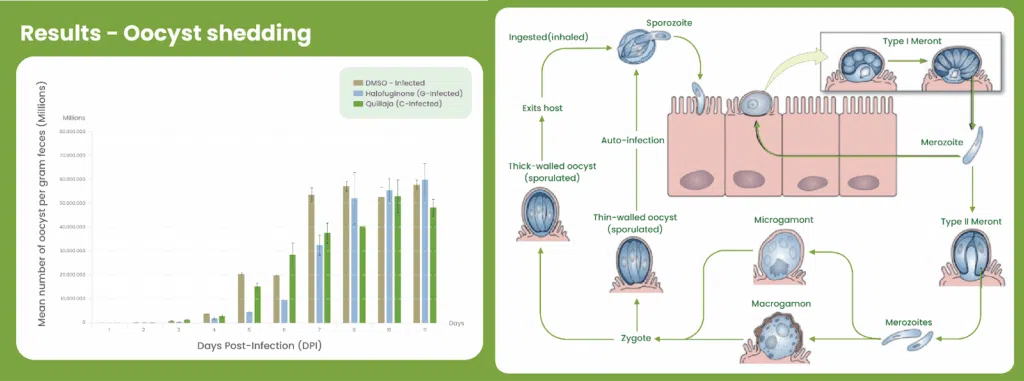
Immune modulation: the path to effective control
The path of immune activation and the immune response needed after infection of C. parvum is similar to the activation and stimulation observed in Quillaja saponaria–supplemented animals. Firstly, the activation of the innate immune response occurs through the activation of dendritic cells and macrophages, initiating a series of cytokine releases (TNF-α, IL-8, IL-12, IFN-γ) for an increase in fast immune activity. Also, the development and enhancement of the adaptive immune response take place through the activation of CD4+ T and CD8+ T cells, which are highly important in the development of the Th1 and Th2 immune responses, responsible for the elimination of C. parvum⁴ ⁸.
This similarity shows that the activation and modulation of the immune system by the supplementation of Quillaja saponaria extract will help to create a better response against C. parvum infection, preventing the development of the disease and the establishment of the parasite.
References:
1. Brunauer M, Roch FF, Conrady B. Prevalence of worldwide neonatal calf diarrhoea caused by bovine rotavirus in combination with bovine coronavirus, Escherichia coli K99, and Cryptosporidium spp.: a meta-analysis. Animals (Basel). 2021;11(4):1014. doi:10.3390/ani11041014
2. Roblin M, Canniere E, Barbier A, Daandels Y, Dellevoet-Groenewegen M, Pinto P, Tsaousis A, Leruste H, Brainard J, Hunter PR, Follet J. Study of the economic impact of cryptosporidiosis in calves after implementing good practices to manage the disease on dairy farms in Belgium, France, and the Netherlands. Curr Res Parasitol Vector Borne Dis. 2023;4:100149. doi:10.1016/j.crpvbd.2023.100149.
3. Cruvinel LB, Ayres H, Nicaretta JE, Couto LF, Nunes CM, Buzinaro MG, Oliveira Filho JP. Prevalence and risk factors for agents causing diarrhea (coronavirus, rotavirus, Cryptosporidium spp., Eimeria spp., and nematodes helminths) according to age in dairy calves from Brazil. Trop Anim Health Prod. 2020;52(2):777-91. doi:10.1007/s11250-019-02069-9
4. Thomson S, Hamilton CA, Hope JC, Katzer F, Mabbott NA, Morrison LJ, Innes EA. Bovine cryptosporidiosis: impact, host-parasite interaction and control strategies. Vet Res. 2017;48:42. doi:10.1186/s13567-017-0447-0.
5. Silverlås C, Björkman C, Egenvall A. Systematic review and meta-analyses of the effects of halofuginone against calf cryptosporidiosis. Prev Vet Med. 2009;91(2–4):73-84. doi:10.1016/j.prevetmed.2009.05.003.
6. Blue, C. E. C., Emami, N. K., White, M. B., Cantley, S., & Dalloul, R. A. (2023). Inclusion of Quillaja Saponin Clarity Q Manages Growth Performance, Immune Response, and Nutrient Transport of Broilers during Subclinical Necrotic Enteritis. Microorganisms, 11(8), 1894. https://doi.org/10.3390/microorganisms11081894
7. Department of Agriculture, Food and the Marine; Agri-Food and Biosciences Institute. All-Island Animal Disease Surveillance Report 2019. Dublin: DAFM; 2020
8. Fleck JD, Betti AH, da Silva FP, Troian EA, Olivaro C, Ferreira F, Verza SG. Saponins from Quillaja saponaria and Quillaja brasiliensis: particular chemical characteristics and biological activities. Molecules. 2019;24(1):171. doi:10.3390/molecules24010171

